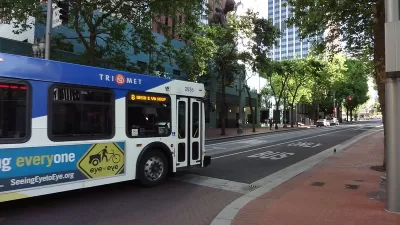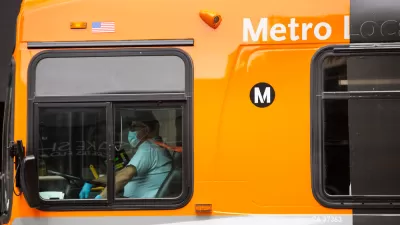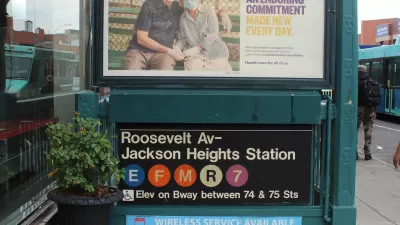A group of 12 leading transit experts debriefed on the consequences of the pandemic for public transit, and proposed a future that centers public transit as a tool for economic recovery and righting the past wrongs of the planning profession.

"Covid-19 wreaked havoc with America’s public transportation networks," writes Tanya Snyder to introduce the proceedings of a recent panel discussion between 12 leading transit experts on the future of public transit in the post-pandemic world.
"Empty buses and train cars were a good sign, at first, that people were heeding calls for social distancing," continues Snyder. "Within weeks, we realized that grocery employees and hospital workers, renamed “essential workers” and lauded as heroes, were struggling to get to work as the transit systems they relied on cut schedules. People found it hard to make essential trips and access medical care. It turned out that even during a lockdown, public transportation is the artery through which the lifeblood of cities flows."
The cultural and economic position of public transit evolved constantly during the pandemic, and the likelihood that the future of public transit is likely to be a source of political consternation and technological innovation inspired Politico to gather a panel of 12 leading transit advocates, planners, system designers, and government officials from around the world for a two-hour zoom discussion about the future of transit.
The discussion started with a recap of the major events and themes of transit during the pandemic (e.g., "widespread service cuts," disparate impacts, migration, disappearing rush hour, and "hub-and-spoke systems became obsolete"). The second part of the discussion focused on how to "future-proof" public transit for life after COVID. The subheadings of the part of the discussion are listed below, with more details provided in the source article:
- It's time to end transit red-lining
- Refocus on bus service
- Detangle jurisdictions
- Make driving worse
- Revamp data systems
FULL STORY: Policy Hackathon: Can public transit recover from Covid-19?

Study: Maui’s Plan to Convert Vacation Rentals to Long-Term Housing Could Cause Nearly $1 Billion Economic Loss
The plan would reduce visitor accommodation by 25,% resulting in 1,900 jobs lost.

North Texas Transit Leaders Tout Benefits of TOD for Growing Region
At a summit focused on transit-oriented development, policymakers discussed how North Texas’ expanded light rail system can serve as a tool for economic growth.

Why Should We Subsidize Public Transportation?
Many public transit agencies face financial stress due to rising costs, declining fare revenue, and declining subsidies. Transit advocates must provide a strong business case for increasing public transit funding.

How to Make US Trains Faster
Changes to boarding platforms and a switch to electric trains could improve U.S. passenger rail service without the added cost of high-speed rail.

Columbia’s Revitalized ‘Loop’ Is a Hub for Local Entrepreneurs
A focus on small businesses is helping a commercial corridor in Columbia, Missouri thrive.

Invasive Insect Threatens Minnesota’s Ash Forests
The Emerald Ash Borer is a rapidly spreading invasive pest threatening Minnesota’s ash trees, and homeowners are encouraged to plant diverse replacement species, avoid moving ash firewood, and monitor for signs of infestation.
Urban Design for Planners 1: Software Tools
This six-course series explores essential urban design concepts using open source software and equips planners with the tools they need to participate fully in the urban design process.
Planning for Universal Design
Learn the tools for implementing Universal Design in planning regulations.
Ascent Environmental
Borough of Carlisle
Institute for Housing and Urban Development Studies (IHS)
City of Grandview
Harvard GSD Executive Education
Toledo-Lucas County Plan Commissions
Salt Lake City
NYU Wagner Graduate School of Public Service





























